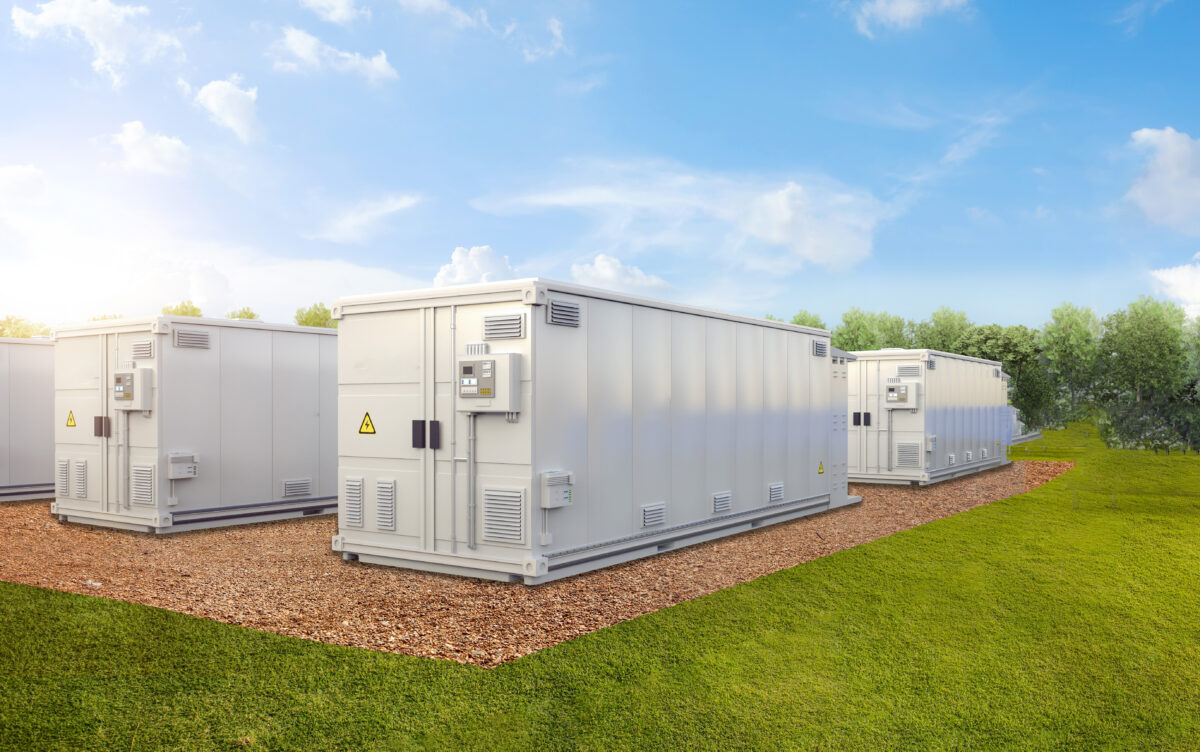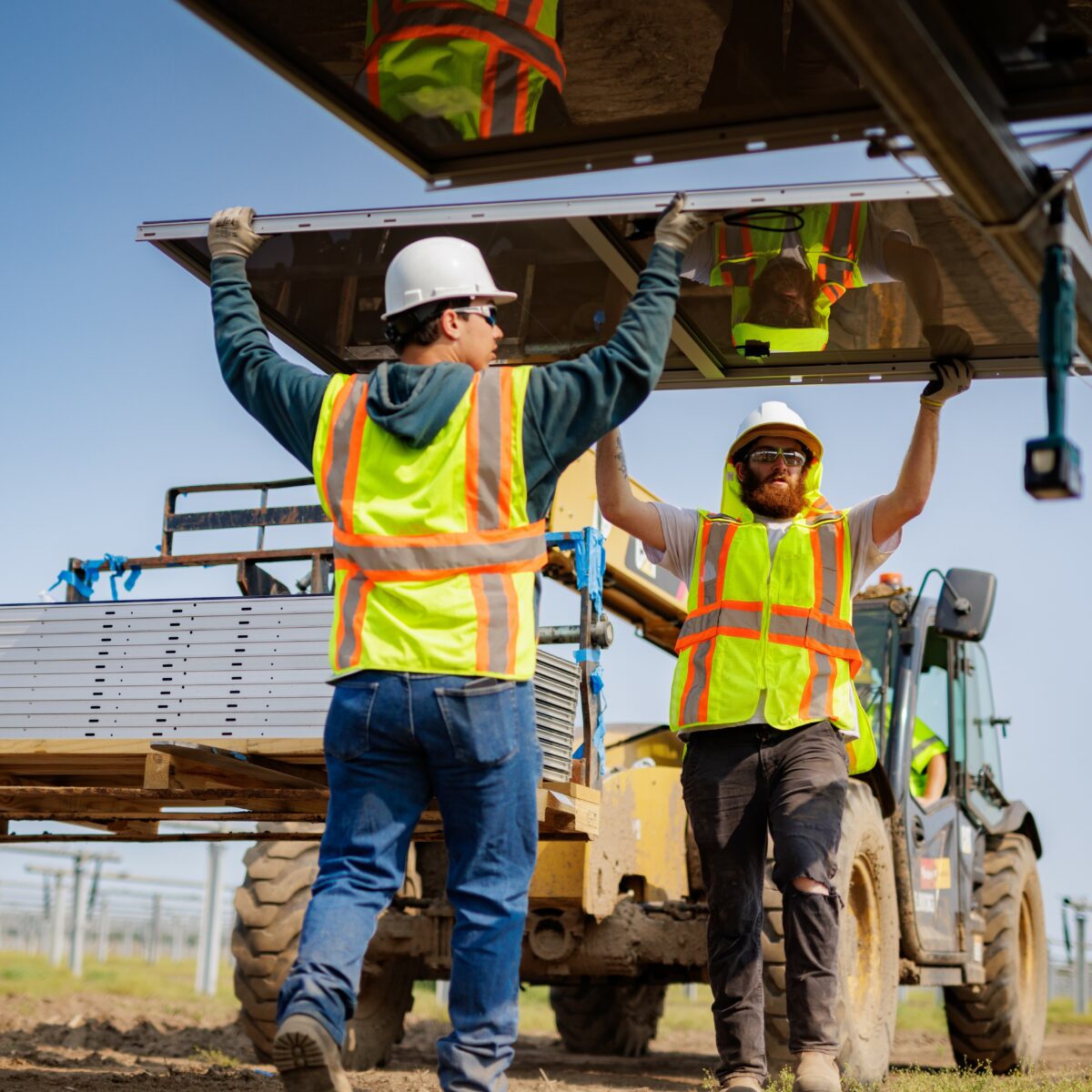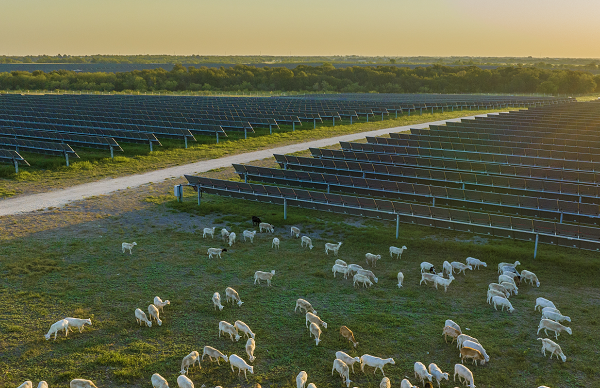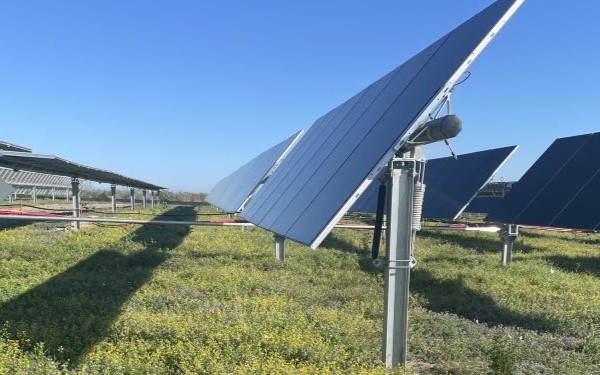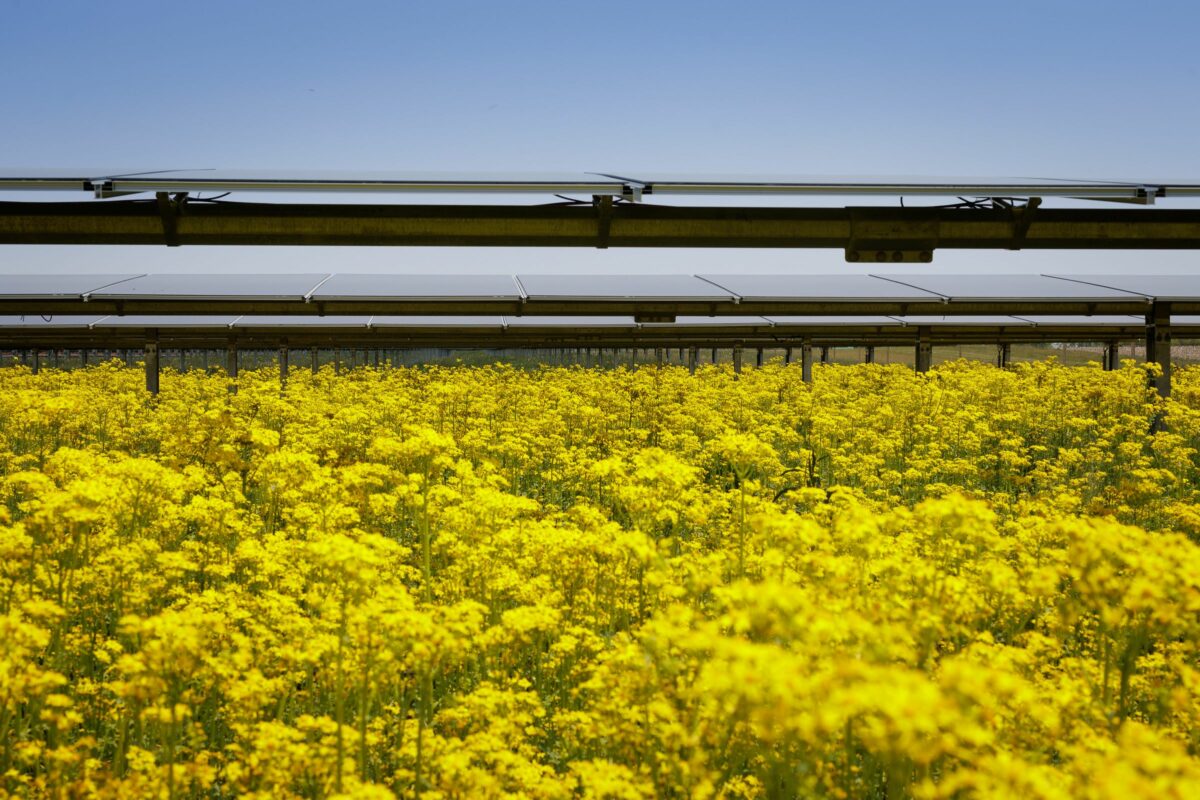Birch Solar FAQs
We’ve received lots of interest in our Birch solar project, so we’ve put together a list of the most commonly asked questions, and their answers:
Health and Safety
How safe is a solar farm?
A solar project is about as safe as a facility can be. There are no air emissions from the solar farm. There are no chemicals. No trucks will be coming and going on a daily basis once construction is complete. The power will leave the solar project on lines just like the power lines in your neighborhood.
Can birds catch on fire if they fly over a solar facility?
Bird safety, as well as preserving their habitats, is an important topic to all of us and we understand you may have concerns after reading information on the internet.
For Birch Solar, we’re using solar photovoltaic, or PV, panels. This technology is designed to absorb as much sunlight as possible in order to generate electricity. Solar PV technology will not harm birds. In fact, we have seen bird habitats increase at our solar projects because once they’re built they are undisturbed for many years.
The technology that you’ve read about having issues with birds is called solar thermal. That technology uses mirrors that reflects – instead of absorbing – sunlight to the top of towers that are hundreds of feet tall. When that technology reflects sunlight, the beams can get hot and harm birds. We are absolutely not using that technology at Birch Solar.
This study that includes several of Lightsource bp’s solar facilities in the UK shows an increase in biodiversity as well as an increase in bird species and abundance of birds at solar PV facilities. As a company, we’ve been building solar projects with the aim to increase local biodiversity for over 10 years now.
Do solar projects increase local temperatures?
A study from the University of Maryland shows that any created heat by a solar project is much smaller than that created by urban areas, dissipates quickly and can’t be measured 100 feet away. We also plant ground cover which provides a cooling effect, and as referenced in the study, mitigates temperature increases.
Are solar panels hazardous to the environment and our health?
Lightsource bp utilizes tier-one equipment suppliers, and requires solar panels to pass testing regulated by the Environmental Protection Agency (EPA) to ensure they are not hazardous to people or the environment. It’s a part of our equipment supplier contract obligations, and we will not buy solar panels from any manufacturers who have not passed this testing.
Will solar panels end up in a landfill in my area?
Solar panels used at our solar facilities pass rigorous testing to prove they are non-hazardous under federal law and could be disposed of in regular landfills just like household garbage. However, Lightsouce bp is committed to recycling all solar panels, including those that will be used at our Birch Solar and all our solar projects in the U.S. – That includes any panels damaged during construction, operations, and all panels at the end of life/decommissioning.
Can solar panels be recycled?
Lightsource bp is a board member of the Solar Energy Industries Association (SEIA), an organization whose members are dedicated to responsible end-of-life management and are proactively developing recycling processes for the solar industry as a whole. SEIA has created a national solar panel recycling member-based program that aggregates the services offered by recycling vendors here in the U.S. Already SEIA’s recycling partners have processed mor than 4 million pounds of PV modules and related equipment since the program launched.
Is EMF a concern?
EMF from solar is no more concerning than EMF from home appliances. We are all exposed to EMF throughout our daily lives. All electric lines and equipment, including the lines to homes and businesses and home appliances, create EMF. Several studies have measured EMF at the perimeter of a solar facility to be negligible. We have published one of the studies on our website (see page 14 of the report).
Will I hear noise from the solar project?
Any sound from Birch Solar will be limited to inverters and transformer which cannot be heard past the project boundaries. Local regulations require that our noise levels at our site boundary are no greater than 5 decibels above ambient levels. We will have sound modeling to confirm as part of our OPSB application, and will post this information on our website as soon as it’s available. Although certainly not anticipated, if noise levels are greater than required regulations, Lightsource bp is required to resolve any noise issue.
Is glare an issue?
Solar panels are designed to absorb, not reflect, sunlight and reflect less light than glass or water. Regardless, a glare study will be completed as part of our OPSB application to confirm that there will be no issues.
How will traffic flow be managed?
Once the solar farm is in place it requires very little maintenance and approximately monthly visits in regular cars or 4x4s would cause no traffic disruption. While the solar farm is being constructed, a traffic management plan will be put in place.
PILOT
What is a PILOT?
The PILOT (Payment in Lieu of Tax) program, as set out by the State of Ohio, provides sustainable and steady tax dollars into the community for the local governments and schools, as well as significant job creation. This mechanism is available whether or not a county is in an “Alternative Energy Zone.”
For Birch Solar, it is estimated that the PILOT program will bring approximately $2.7M annually to the community and $81M throughout the life of the project. That is in comparison to the less than $100,000 currently paid in traditional agricultural tax on the project property.
The impact of the PILOT program on school funding is significant; approximately $1.5M is provided to the local school districts annually. These funds can be used as the school districts see fit and often are able to reduce the need for additional levies. In November 2018, the Shawnee School Board’s request for an additional $4.4M mills levy was rejected, for the second time. Lightsource bp believes this additional $1.5M annually will help to alleviate the need for these additional taxpayer funds.
Are there any benefits to the community with a PILOT?
The benefits of the PILOT extend beyond financial:
- Requires a minimum ratio of 80% of Ohio-domiciled full-time equivalent employees employed in the construction and installation of the project.
- Requires a certificate from each county engineer with which the taxpayer has an agreement regarding the repair, rebuilding, and reinforcement of roads, bridges, and culverts that continues beyond the completion of construction, to the effect that the taxpayer is not in default on any of its obligations.
- Required training and emergency responders in handling emergencies at the project.
Project must establish a relationship with a member of the university system of Ohio or with a person offering an apprenticeship program registered with the U.S. Department of Labor or the Ohio Apprenticeship Council to educate and train individuals for careers in the wind or solar energy industry.
Why would the local community want to enter into the PILOT?
A PILOT ensures that the tax revenue from Birch Solar is held constant over the life of the project (vs a declining tax revenue with the traditional personal property tax regime where taxes decline as the equipment depreciates). Further, the PILOT mandates 80% of the project’s workforce be Ohioans and requires commitments between the project and local higher educational institutions to encourage local workforce development, as well as training and equipment for local responders.
Does the county lose out on tax revenue as a result of a solar project obtaining a PILOT?
No, the PILOT revenue represents an average of 15-20 times increase in local tax revenue when compared to the current agricultural use.
What is the process for Lightsource bp to apply for a PILOT?
- Applicant submits the application to the Ohio Development Service Agency
- The ODSA sends the application to the county commissioners
- The county commissioners then have 30 days to issue a resolution approving the application
- If the resolution is issued, ODSA will issue a certificate that says the applicant is a Qualified Energy Project (QEP) eligible for the PILOT exemption – provided they meet all of the requirements for the PILOT after construction is complete.
- Once construction is complete – within 90 days after COD – the application submits a construction completion report to ODSA that must include: Certificate from county engineer that the road use agreement was complied with, certificate from first responders that the training and equipment was provided, verification that the university or apprenticeship program is in place, verification and documentation that 80% of the construction and installation employees were Ohio-domicile
- If all this information is provided, the ODSA will authorize the applicant to receive the PILOT exemption and send notice to the county of same.
Environmental
How will threatened and endangered species be protected?
State and federally protected wildlife will not be impacted by Birch Solar. Through regulatory agency consultation with the US Fish and Wildlife Service and Ohio Department of Natural Resources, the project will avoid impacts to threatened and endangered species that are potentially present at the project site.
How will the eagle habitats and the habitats of other birds in the area be protected?
Birch Solar will be developed in a manner that conserves important habitats and species. We commit to no tree removal, so that bald eagles and other raptor habitat are not disturbed. Prey availability will be the same or will increase due fostering biodiversity at the site. Additionally, the project will be setback from all wetlands at the project site.
Should I be concerned about stormwater runoff from the project?
A Stormwater Pollution Prevention Plan is required by Ohio EPA for the project. Through this process we will create best management practices to reduce erosion and sedimentation. By implementing this plan it guarantees that project related construction activities will not negatively impact water resources, including surface and ground water. If there is any runoff to neighboring properties created by the project that causes any negative impacts, Lightsource bp would need to correct any issues and can be fined for violations.
What will the impact be on wildlife?
Studies have confirmed that with proper planning and land management, solar farms can bring about significant increases in wildlife populations and biodiversity. Solar projects planted with pollinator habitat can actually help increase local agricultural yields through increased pollination and other beneficial insect services. Once installation is complete, they are secure sites with little disturbance from humans or machinery for decades.
Can the land used by a solar farm be redeveloped in the future?
The posts on which the panels are mounted take up a small percentage of the land area, with the majority of the site being undisturbed or revegetated land. At the end of the project the installation will be dismantled, removed and recycled without harming the land – we make sure that the land is restored to its original state.
Long-term land management
Will the land be properly maintained?
During the operational life of the project, Lightsource bp will have an operations budget of $4.6 million per year to maintain the facility and the land. As a long-term owner and operator of the project, we have a significant financial interest to maintain maximum energy production, which involves keeping the vegetation tidy to keep it from interfering with the trackers or shading the panels.
Birch Solar will be monitored and maintained by a team that ensures all equipment is functioning properly and safely, as well as vegetation management and upkeep. There will be operations and maintenance workers on site every workday, Monday – Friday along with 24 hour availability in case of emergency.
How are the panels kept clean?
Generally, rainfall helps to keep the panels free of dust and dirt.
Decommissioning
Can the land be returned to agriculture?
At the end of the project, the installation will be dismantled, completely removed and recycled. Your farmer neighbors will be able to return to row crop agriculture or pursue the type of agricultural practice that best suits their farm needs at the time. The decommissioning process (the take down and recycling of the project) is overseen by multiple Ohio agencies. The site will be fully revegetated as part of this process, as overseen by these same agencies.
Who would hold a decommissioning bond?
The Treasurer of State holds the decommissioning bond.
Loss of farmland
Is it a concern that we’re losing farmland to solar?
Urban sprawl and rural subdividing are the primary contributors to loss of farm ground. Solar energy temporarily sets aside farm ground and protects it from permanent loss due to industrialization. The Birch Solar project will utilize just 0.02% of the more than 13.9 million acres of farmland in Ohio.
Does solar harm the soil for future farming?
The solar project will actually improve the soil for future agriculture. Over the life of the project:
- Soil will be protected from erosion
- Fewer chemicals will be utilized than farming
- Practices such as grazing and pollinator plantings will increase biomass production, nitrogen content, soil carbon storage and soil moisture
- “Resting” the ground can return it to a better condition at the end of the project’s useful life, similar to fallowed parcels under USDA’s Conservation Reserve Program
Birch Solar specifics
What’s the benefit to the community if we’re not the direct recipients of the electricity?
All solar projects collectively help decarbonize our country’s electric grid and lower our country’s overall electricity costs. Electricity flows like water in a pipe – the electricity from Birch Solar will flow into AEP’s 345 kV grid and the PJM system. So, Birch Solar would help reduce pollution from electricity generation for the overall grid for homes and businesses in Ohio, with the economic benefits including tax money for schools, along with jobs, staying local.
What is the compensation planned for homeowners adjacent to the project?
Lightsource bp is planning several voluntary initiatives that are not required by the OPSB permitting process. This includes:
- Payments to adjacent landowners ranging from $5000- $50,000 depending on the proximity of the landowner to the project. These payments are one time and require no endorsement, confidentiality, or support of the project by the landowner.
- Creation of a pollinator habitat to boost local biodiversity and foster wildlife habitat.
- Maximization of agricultural integration through efforts that will employ Ohio farmers, such as sheep grazing.
- Planting of trees to screen the solar project from neighbors’ views, working with those neighbors on the landscape plans.
- Selection of fencing that will better integrate with the rural landscape and wildlife.
Who is paying for the installation of the solar system?
Lightsource bp and our project investors will fully fund the project with private capital, an estimated $316 million of private investment into energy infrastructure for Ohio.
Will new transmission lines be run for this project?
No – the parcels selected for the project have access to existing transmission infrastructure, so we do not need to build new transmission lines.


